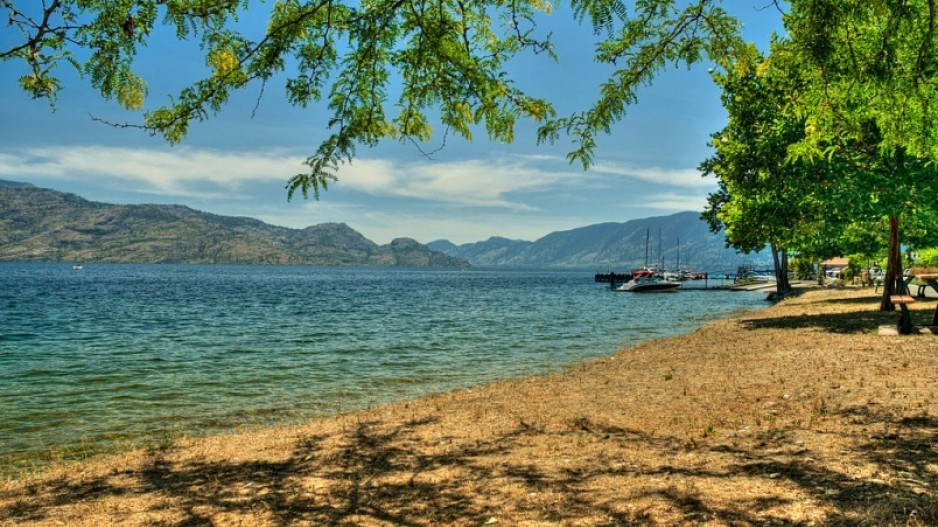Mike Sokal often takes a moment to admire the clear water of Okanagan Lake whenever he takes another sample for water quality testing.
The lake is an essential part of life in the Okanagan and is home to an abundance of waterfowl and fish species.
Local municipalities depend on it for drinking water and on hot summer days, boaters and swimmers flock to it for relief from the heat.
However, 50 years ago, parts of the lake were often covered with large algae blooms caused by municipal wastewater treatment plants and community sewer outfalls pumping excess nutrients into the water.
The pollution caused a major public outcry, and the wastewater treatment plants were eventually upgraded with new technology. Now, five decades of data illustrates how the lake and others downstream have turned into a success story.
"People have been monitoring the water quality of the lake and studying it for a long time," said Sokal, a water quality monitoring limnologist and provincial lead for the Long-Term Lake Trends Program for the Ministry of Environment and Climate Change Strategy.
"You can really see with the data how things have improved and where we are at now, which is excellent water quality in an area that's driven by tourism and recreation.
"Lakes are complex ecosystems that are sensitive to a variety of stressors from human development activities and climate change.
“If we can understand how things change over time, then we can figure out what the mechanisms are for that change. This is one of the main reasons why we continue to monitor lakes around the province."
Operated by the Ministry of Environment and Climate Change Strategy, the BC Lake Monitoring Program has been in place since 2014 to better understand and report changes to the water quality of lakes, which helps determine the best way to manage and protect them.
Fifty-three lakes throughout B.C. are currently being monitored through the program, which outlines comprehensive methods for various types of sampling that look at the physical, chemical and biological components of a lake to determine how healthy it is.
The sampling is done in the spring and late summer, and is also used to study water quality trends and how things are changing over time. Some lakes have been monitored by stewardship groups and a variety of other organizations for decades, providing an abundance of data for scientists to analyze.
July is Lake Appreciation Month, and Sokal appreciates the hundreds of volunteers who assist with the province's lake monitoring programs. Depending on their commitment, volunteers can take on multiple levels of study. Without their help, Sokal believes some of the smaller lakes wouldn't get sampled.
Marge Sidney is one of the volunteers who is passionate about lakes and is a long-time board member of the BC Lake Stewardship Society, which began informally during the mid-90s with a pair of lake scientists with the Ministry of Environment and Climate Change Strategy. But as more people called the ministry with questions about their lake or what they could do to protect it, an official lake monitoring program was developed to guide the growing number of enthusiastic citizen scientists.
Every summer, Sidney travels to dozens of lakes throughout the province, providing support, advice, encouragement and technical training to stewardship groups and individuals who share her passion for lakes. It's a role she finds incredibly rewarding.
"Lakes are important for aquatic life, our wildlife and for people. If we can work hand-in-hand with the people who live on the lakes and collect data that goes back to the province to add to the database, it's a win-win situation," said Sidney, a retired fisheries biologist. "The BC Lake Stewardship Society can't do everything on a lake, but when you have volunteers who care, that is such a valuable asset. When people take ownership of their lake, it's an awesome feeling."
Quick facts:
* Algae blooms, including cyanobacteria blooms (also known as blue-green algae) are natural occurrences in many lakes throughout B.C. They are not generally considered a threat to the aquatic environment, but they can be a risk to humans, pets and livestock.
* Of the 53 lakes monitored by the Long-Term Lake Trends Program, the deepest is Adams Lake with a maximum depth of 457 metres, making it the third deepest lake in Canada and the 24th deepest in the world.
* At six kilometres wide and 137 kilometres long, Atlin Lake in the northwest corner of the province is the largest natural lake in B.C.




